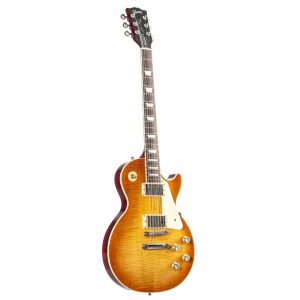In the beginning of ear training, most people learn the basic solfege scale of Do-Re-Mi-Fa-Sol-La-Ti-Do. But as time goes on, it’s important to learn other scales and variants so you can learn to identify the various differences as well as their implications. In this article, we’re going to do a more technical analysis on Solfege and explain all of syllables and what they mean.
Purpose of Solfege
The idea behind solfege is to create a series of syllables within a scale to help your brain and ear associate specific intervals with those syllables. The solfege syllable ‘Do’ (pronounced Doh) is used to represent the root note of our scale. What pitch ‘Do’ starts on can be anything. Once you’ve established the root note, now we want to train our ear to hear the differences in pitches so you can identify various scales and tonal variants.
The first scale we focus on is the major scale. The syllables for this are Do (Doh), Re (Ray), Mi (Mee), Fa, Sol, La, Ti (Tee), and then back to Do. As with most music theory, the syllables we get after this are a comparison to the major scale. If a note were to stay the same then so would the syllable. If a note changes, then we need a new syllable to represent the difference in pitch.

For example, a minor scale compared to major shares the same root, second, fourth, and fifth but have a different third, sixth, and seventh. Therefore Do, Re, Fa, and Sol will stay the same but Mi, La, and Ti will have to change. The new solfege pattern for a minor scale will be Do, Re, Me (May), Fa, Sol, Le (Lay), Te (Tay), Do.

What we understand from this is that anytime we use a flat third, flat sixth, or flat seventh, they will be represented by the new syllalbes Me, Le, and Te. But these are note the only notes that get variants. Every note has either a flat or sharp edition. Some notes even get both.
So now that I’ve thoroughly explained the purpose of solfege and how it all works. Let’s take a look at all of the syllables and what they mean.
Emphasizing the Right Syllable

Listed above are every syllable in the solfege language. Syllables with the same first letter correspond to the same number they hold in the scale. For example, syllables starting with the letter ‘R’ are all second scale degrees. Ra represents a flat two, Re a natural two, and Ri a sharp two.
Some of these notes overlap in pitch. Fi and Se both are the same pitch but have different notes. Fi represents a sharp four while Se represents a flat five. What scale degree you use would depend on what’s on the page.
The decision to use what note where is a complicated topic that goes well beyond the scope of this article. For now you’ll have to use your best judgement in reading the notes on the page. If you’re familiar with other scales and modes, you should be able to apply the appropriate syllables to the right scale degrees.
Other Posts

My Go To Guitar Amps
When it comes to guitar tones, there is more to choose from now than ever before. From guitars and pickups to amps and pedals, there

Why Warming Up Is So Important
If you’ve ever gone to the gym or played a sport, you’ll know that warming up is the first thing any trainer or coach will

Guitars: Cheap vs. Expensive
Guitars have huge differences in prices ranging from hundreds of dollars to thousands of dollars or even more. Many beginners or casual observers will not
